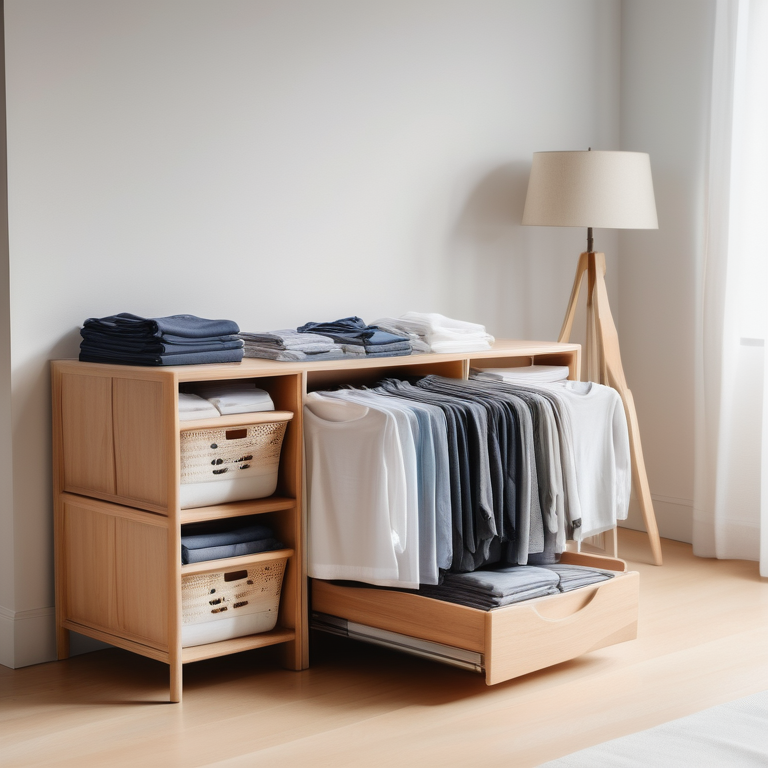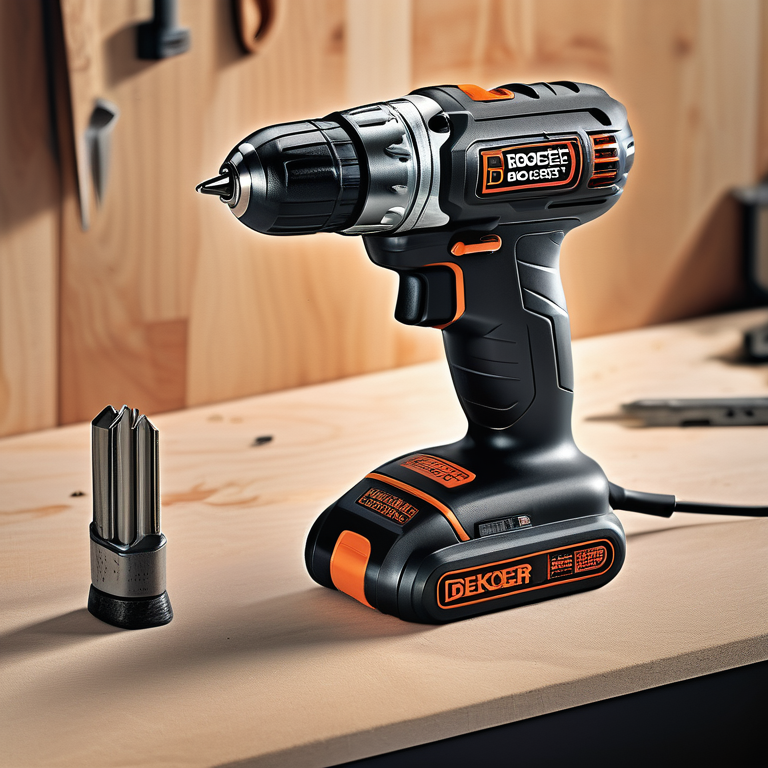Master the Art: How to Fold Your Clothes Like a Pro


Key Highlights
- Learn how to fold clothes quickly and efficiently, maximizing your drawer and closet space.
- Discover folding techniques for different garments, from t-shirts and jeans to sweaters and dresses, ensuring they stay wrinkle-free.
- Explore advanced folding methods, like the KonMari method, for a perfectly organized wardrobe.
- Get tips for folding delicate items without causing damage.
- Discover the benefits of proper clothes folding, from extending the life of your clothes to reducing stress.
Introduction
Tired of messy drawers and wrinkled clothes? Mastering the art of folding clothes can make a big difference in your daily routine. With a few simple folding techniques, a flat surface, and a little patience, you can transform a mountain of laundry into a stack of neatly folded clothes. This comprehensive guide will teach you various techniques to fold clothes like a pro.
The Basics of Folding Clothes
Folding clothes properly not only saves space and reduces wrinkles but also makes it easier to find what you’re looking for. The first step is to choose a clean, flat surface, like a table or bed. Having a dedicated folding space can make the task more efficient.
Once you have your space ready, it’s time to start folding. The key is to smooth out wrinkles as you go and create crisp folds. Use your hands to flatten the fabric and align seams for a polished look. Remember, practice makes perfect, so don’t get discouraged if your first attempts aren’t flawless.
Understanding Different Fabric Types
Before you start folding, it’s important to consider the fabric type of each garment. Delicate fabrics, like silk or lace, require gentle handling and may benefit from folding with tissue paper to prevent wrinkles. Sturdier fabrics, such as cotton or linen, can be folded more firmly.
For knitwear, like sweaters or cardigans, avoid hanging them on hangers, as this can cause stretching. Folding them flat or using a special sweater-folding technique will help maintain their shape. Knowing how to handle different fabric types ensures your wardrobe remains in top condition.
Finally, always check the garment care labels for specific folding instructions. Some items, like velvet or embellished pieces, may need to be stored in a particular way to avoid damage. By paying attention to these details, you can keep your clothes looking their best for years to come.
Preparing Your Clothes for Folding
A well-organized folding process begins with a clean and spacious setup. Choose a smooth surface, like a cleared-off table, bed, or even a folding board if you have one. Make sure it’s large enough to comfortably accommodate a fully laid-out garment. This allows for smoother folds and less readjusting as you work.
Before diving into the folding process, take a moment to smooth out any wrinkles or creases on the garment. This is particularly helpful if the clothes have been sitting in a laundry basket for a while. A few quick shakes and smooths can make a big difference in the final result.
Lastly, consider having all your laundry essentials within arm’s reach. This includes any laundry spray you might use for a final touch-up, as well as storage baskets or drawers for the freshly folded clothes. Having everything you need nearby streamlines your laundry day and maximizes efficiency.
Step-by-Step Guides
Folding clothes efficiently involves mastering some basic folds. Once you get the hang of these techniques, you can apply them to almost any garment. Ready yourself a flat surface and let’s get started.
These techniques not only ensure a uniform look in your wardrobe but also help maximize storage space, whether in drawers or on shelves.
How to Fold Shirts and Blouses
Lay the shirt flat, face down, and smooth out any wrinkles. Fold the sleeves inward, creating a straight line from shoulder to hem. Then, fold one side of the shirt towards the center, aligning the edge with the collar.
Repeat this step on the other side, creating a long, rectangular shape. Now, fold the bottom edge of the shirt upwards, about a third of the way up.
Finally, fold the shirt in half again, ensuring the bottom edge meets the collar. You now have a neatly folded shirt, ready to be stored upright in a drawer or stacked on a shelf.
The Best Way to Fold Pants and Jeans
Start by laying your pants flat on the surface, smoothing out any wrinkles. Fold one leg over the other, aligning the seams and making sure the front pockets are lying flat against each other.
Next, locate the groin seam and use it as a guide to fold the crotch area inwards, creating a triangular shape. Hold the waistband and carefully fold the pants in half upwards, aligning the bottom hems with the waistband.
This method works for both dress pants and casual jeans, creating a crisp fold that helps prevent creases. For wider-legged pants, you might need to fold them in thirds instead of halves to achieve a compact shape.
Folding Dresses and Skirts Without Wrinkles
Lay the dress or skirt flat, smoothing out any wrinkles. Fold the garment in half lengthwise, bringing one side over the other and aligning the side seams. For dresses with long sleeves, fold the sleeves inwards to create a straight line along the sides.
Next, fold the garment in half again, bringing the hem up towards the neckline. Depending on the length, you can fold it in half once more, or for longer dresses, fold it into thirds, creating a rectangular shape.
This vertical fold helps minimize wrinkles, especially in delicate fabrics. Once folded, store your dresses and skirts lying flat or hanging on padded hangers to keep their shape.
Specialty Items
Certain clothing items require a little extra care when folding. These might include delicate lingerie, bulky sweaters, or items with unique shapes. Learning how to fold these specialty items properly can help extend their lifespan and keep your wardrobe organized.
From mastering the art of rolling socks to finding the optimal way to store your intimates, these tips ensure everything has its designated place in your organized haven.
Mastering the Fold for Socks and Undergarments
Socks are notorious for getting lost in the laundry abyss, but a simple folding technique can help. Pair your socks together, lay them flat, and fold them in half or roll them up from the toe to the cuff. This not only keeps them organized but also prevents them from stretching out.
Underwear can be folded using a similar method. For briefs, fold in half lengthwise, then fold the crotch inward to create a neat square. For boxers, fold them in half lengthwise, then fold in half again, creating a rectangle.
This method helps conserve precious drawer space and keeps your undergarments organized and easy to find.
Techniques for Folding Bulky Items Like Sweaters
Bulky items like sweaters can be tricky to fold without taking up too much storage space. The key is to make them as flat as possible. Lay the sweater flat, fold the sleeves inwards, and fold each side towards the center, creating a long rectangle.
Next, fold the sweater in half or in thirds, depending on its thickness and available closet space. Bulky sweaters are best stored flat on shelves or in drawers with dividers to prevent them from toppling over and losing their shape.
Consider investing in storage containers or vacuum bags for seasonal sweaters to maximize space and protect them from dust and moths.
Folding Linens and Towels for Efficient Storage
Properly folded linens and towels not only save space but also make your linen closet look tidy and inviting. For bath towels, fold them in half lengthwise, then in half again, creating a rectangle.
Hand towels can be folded in half, then in thirds, creating a compact square. For bedsheets, fold them in half lengthwise, then in half again, and continue folding until you have a manageable rectangle.
Here’s a guide to folding standard linen sizes:
|
Linen Type |
Dimensions (inches) |
Folding Technique |
|
Bath Towel |
30 x 60 |
Half lengthwise, then half again |
|
Hand Towel |
18 x 30 |
Half, then thirds |
|
Full/Queen Flat Sheet |
90 x 102 |
Half lengthwise, then half again, then thirds |
Advanced Folding Techniques
For those looking to elevate their folding game, advanced techniques like the KonMari method and the army roll offer unique approaches to maximizing space and achieving optimal organization.
These methods take practice but can be immensely rewarding, transforming your wardrobe into a haven of order and efficiency.
The KonMari Method by Marie Kondo
The KonMari method, developed by Marie Kondo, is a popular approach to folding clothes that emphasizes strategic placement and visual appeal. This method transforms your drawers into organized havens where you can easily see and access all your belongings with a single glance.
The key to this method lies in storing folded items upright, allowing you to maximize space and maintain a tidy aesthetic. This method involves folding each garment into a compact rectangle and then storing them vertically in drawers or on shelves.
By folding clothes in a way that allows them to stand on their own, you eliminate the need for stacking and digging through piles of clothes, saving time and reducing clutter. The KonMari method is not just about folding clothes; it’s about creating a mindful and joyful relationship with your belongings.
The Army Roll for Space Saving
The army roll is a compact and efficient folding technique perfect for saving space in your suitcase or backpack when traveling. This method is particularly useful for travelers who pack light or want to maximize space in their luggage.
Start by laying the garment flat, fold the sleeves inwards, and then roll it tightly from the bottom up, creating a compact cylinder. This technique minimizes wrinkles and allows you to pack more efficiently, especially when combined with packing cubes or compression bags.
The army roll can be used for a variety of clothing items, including t-shirts, pants, and even underwear. It’s a great way to prevent wrinkles and keep your luggage organized while on the go.
Creative Folding Ideas for Kids’ Clothes
Folding kids’ clothes can be a fun and engaging activity. Get your little ones involved by turning it into a game with creative folding ideas. Try folding their t-shirts into animal shapes or their pants into funny figures.
Use colorful dividers in their drawers to separate different clothing categories, making it easier for them to find what they’re looking for. You can also label drawers with pictures or drawings to help younger children who are still learning to read.
By making clothes folding fun and engaging, you can teach your kids valuable organizational skills and encourage them to take pride in keeping their belongings tidy.
Conclusion
Mastering the art of folding clothes not only adds tidiness to your space but also extends the life of your garments. By understanding fabric types and utilizing proper techniques, you can keep your clothes organized and wrinkle-free. From shirts to specialty items like socks and bulky sweaters, each garment deserves a specific folding method. Explore advanced techniques like the KonMari Method and the Army Roll for efficient space-saving. Embrace the gratifying feeling of neatly folded clothes and simplify your daily routine with these expert folding strategies.
Frequently Asked Questions
Can folding clothes properly extend their life?
Yes, proper folding, as part of good garment care, can help extend the life of your clothes by preventing wrinkles, creases, and stretching, preserving their shape and appearance over time.
Tips for maintaining folded clothes in good condition
To maintain folded clothes, ensure they are completely dry before storing, use cedar blocks for freshness, and refold items periodically to prevent permanent creases.
What’s your best laundry folding tip or trick?
My best laundry tip is to create a dedicated folding station with all your supplies to streamline the process and make it more efficient.
Can folding clothes in a certain way help save space?
Absolutely! Folding clothes using space-saving techniques like the KonMari method or army roll, combined with strategic placement in drawers and closets, maximizes storage.
Are there specific techniques for folding different types of clothing items?
Yes, different clothing items often benefit from specific folding techniques. For instance, t-shirts fold well with a basic fold, while bulkier sweaters are best folded in half or thirds to maintain their shape.
What is the best way for folding my round tablecloth?
The best way to fold a round tablecloth is by first folding it in half, then into quarters, creating a triangle shape. Then, fold the triangle in half again and roll it tightly from the pointed end to the curved edge.
Does folding your clothes have any mental benefits?
Yes, folding clothes can have mental benefits. The act of folding and organizing can be meditative and calming, reducing stress and promoting a sense of order and control.









